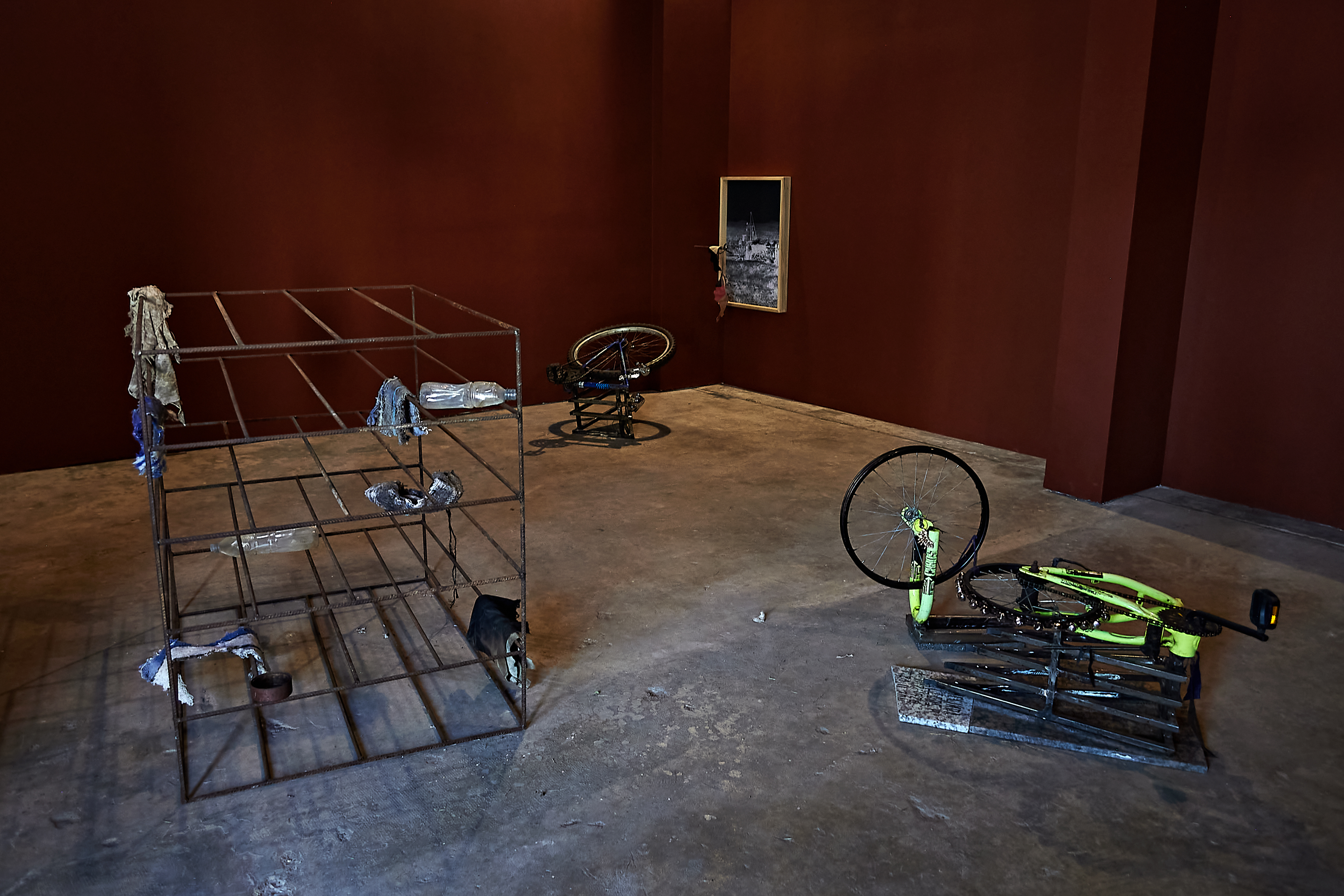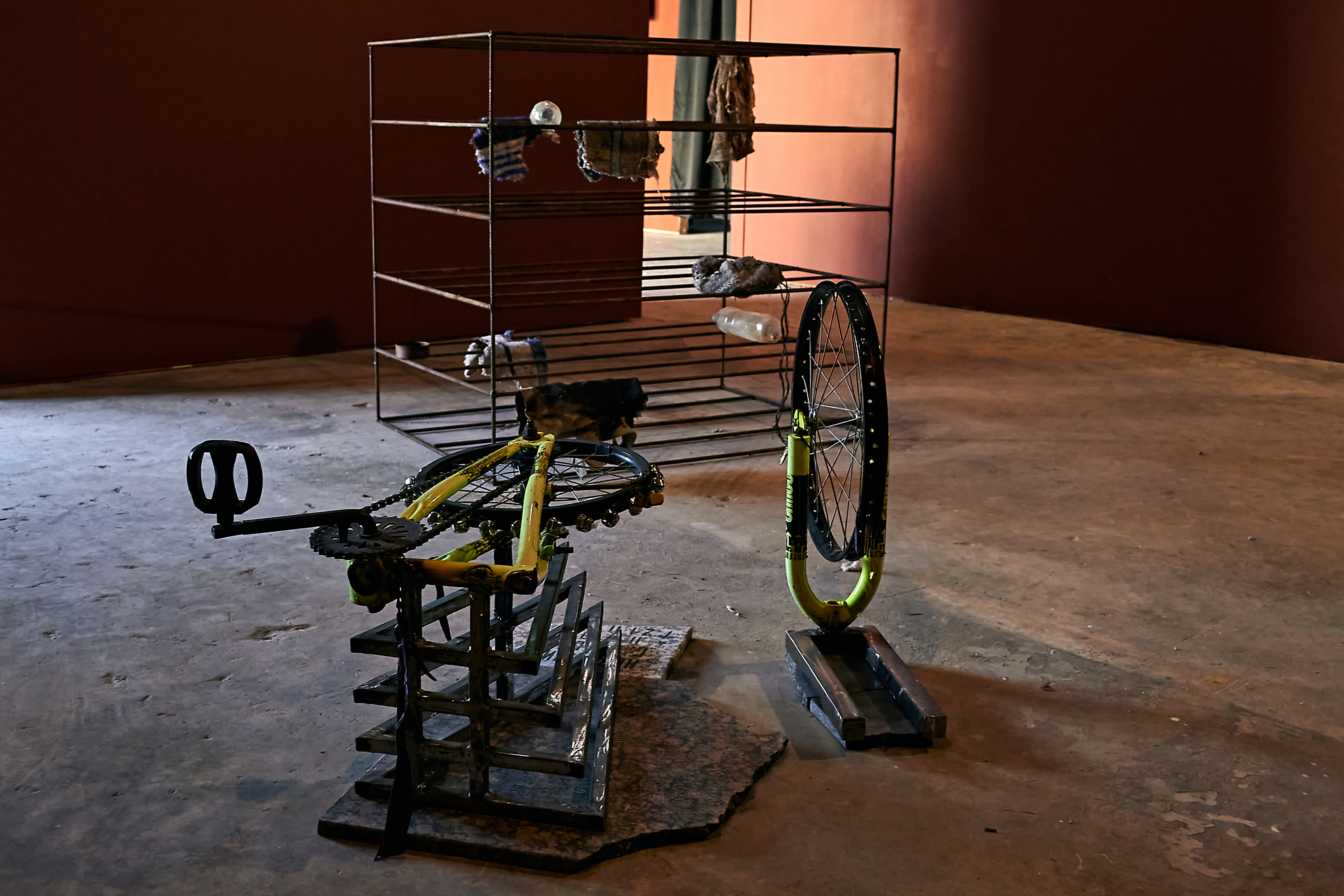
For And what was the desert like? It was like a large brownish mess and a rusty machine and a dot in a line, visual artist and writer Saúl Hernández-Vargas gathers a series of videos, sculptures, and performative gestures that invoke the ghosts and the specters of the borderlands, and that listen carefully, attentively, even furiously to the echoes, the breath, and the resonances of their voices. This series troubles and jolts the narratives that naturalize border territories (desert, rivers, oceans) as infrastructures of the Nation-State. It also highlights the convergence of climate change-fueled drought and NAFTA policies that have made displacement and migration issues of even graver concern.
This body of work was supported by the Matakyev Research Residency from the Center for Imagination in the Borderlands from Arizona State University, and the Interdisciplinary Practices & Emerging Forms from the School of Art at the University of Houston.

